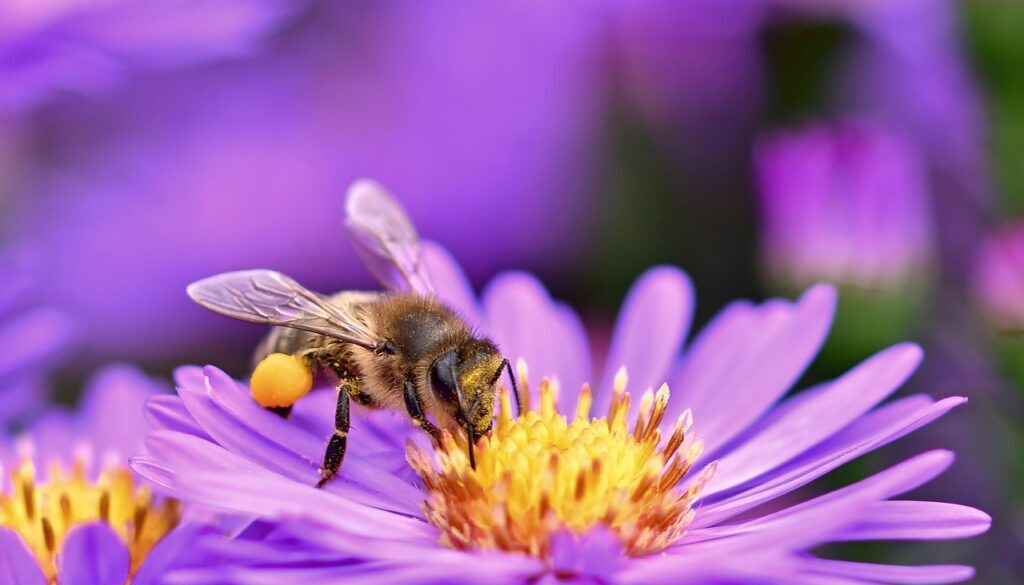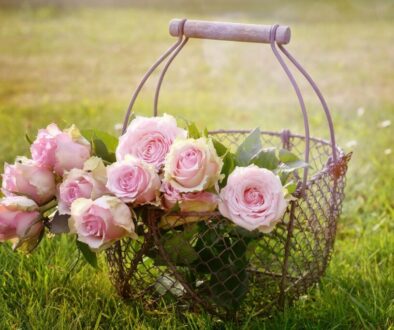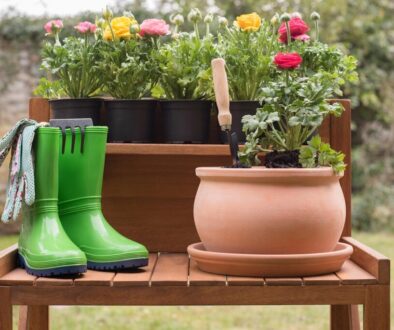Common Mistakes to Avoid When Growing Flowers: A Guide to Blooming Success
Growing flowers can be incredibly rewarding, but it’s easy to make mistakes that leave your garden looking lackluster. Whether you’re a beginner or a seasoned gardener, avoiding these common pitfalls can make all the difference. Let’s dive into the top mistakes and how you can avoid them to ensure your flowers thrive.
1. Overwatering or Underwatering: Finding the Sweet Spot
One of the most common mistakes is getting the watering routine wrong. You might think more water equals happier plants, but overwatering can drown roots and cause rot. On the flip side, underwatering leaves your flowers parched and struggling to survive. The key is to check the soil before watering—stick your finger about an inch deep. If it feels dry, it’s time to water. If it’s damp, hold off. Different flowers have different needs, so research your specific plants to keep them hydrated just right.
2. Ignoring Soil Quality: The Foundation of Healthy Flowers
Your flowers are only as good as the soil they’re planted in. Skipping soil preparation is like building a house on a shaky foundation. Poor soil can lack nutrients, drain poorly, or be too compact for roots to grow. Start by testing your soil’s pH and texture. Most flowers prefer slightly acidic to neutral soil (pH 6.0–7.0). Amend your soil with compost or organic matter to improve its structure and fertility. Remember, healthy soil equals happy flowers!
3. Planting in the Wrong Spot: Sunlight Matters
It’s tempting to plant flowers wherever you think they’ll look prettiest, but sunlight is non-negotiable. Placing sun-loving flowers in the shade or shade-loving flowers in full sun is a recipe for disappointment. Before planting, observe your garden’s light patterns. Full sun means at least six hours of direct sunlight, while partial shade is about three to six hours. Match your flowers to their ideal conditions, and you’ll see them flourish.
4. Overcrowding: Give Your Flowers Room to Breathe
It’s easy to get carried away and plant flowers too close together, but overcrowding spells trouble. When plants are too close, they compete for nutrients, water, and sunlight. This can lead to stunted growth, poor airflow, and increased risk of disease. Follow spacing guidelines on seed packets or plant tags. If your garden looks sparse at first, don’t worry—flowers grow quickly, and they’ll fill in the space beautifully.
5. Skipping Mulch: A Simple Step with Big Benefits
Mulch might not seem glamorous, but it’s a game-changer for flower gardens. It helps retain moisture, regulate soil temperature, and suppress weeds. Without mulch, your flowers are more vulnerable to drying out or being overtaken by weeds. Apply a 2–3 inch layer of organic mulch, like wood chips or straw, around your plants. Just keep it away from the stems to prevent rot.
6. Forgetting to Deadhead: Keep Your Blooms Coming
Deadheading—removing spent flowers—might sound tedious, but it’s essential for continuous blooms. When you leave dead flowers on the plant, it signals to the plant that it’s time to produce seeds, not new flowers. Regularly snipping off faded blooms encourages your plants to keep flowering. Use clean, sharp scissors or pruning shears to avoid damaging the plant.
7. Overfertilizing: More Isn’t Always Better
It’s easy to think that more fertilizer means bigger, better flowers, but overdoing it can harm your plants. Too much fertilizer can burn roots, stunt growth, or cause excessive foliage at the expense of blooms. Follow the instructions on your fertilizer package, and consider using a slow-release option. Remember, moderation is key to keeping your flowers healthy and vibrant.
8. Neglecting Pest Control: Stay One Step Ahead
Pests can wreak havoc on your flower garden if left unchecked. Aphids, slugs, and spider mites are just a few culprits that can damage your plants. Regularly inspect your flowers for signs of pests, like holes in leaves or sticky residue. Use natural remedies like neem oil or insecticidal soap to keep pests at bay. Encouraging beneficial insects, like ladybugs, can also help maintain a balanced ecosystem.
9. Ignoring Seasonal Needs: Timing is Everything
Planting flowers at the wrong time can lead to poor growth or even failure. Some flowers thrive in cool weather, while others need warmth to flourish. Research the best planting times for your specific flowers and climate. Additionally, don’t forget to prepare your garden for seasonal changes. For example, protect tender plants from frost in winter or provide extra water during hot, dry summers.
10. Not Planning for Growth: Think Long-Term
It’s easy to focus on how your garden looks today, but don’t forget to plan for the future. Some flowers grow taller or spread wider than you might expect. Planting without considering their mature size can lead to a messy, overcrowded garden. Research the growth habits of your flowers and plan accordingly. This way, your garden will look stunning year after year.
11. Using the Wrong Tools: Quality Matters
Gardening tools might seem interchangeable, but using the wrong ones can make your job harder and harm your plants. Dull pruners can crush stems instead of making clean cuts, and flimsy trowels can break in tough soil. Invest in high-quality tools that are suited to your gardening tasks. Clean and maintain them regularly to keep them in top shape.
12. Skipping Regular Maintenance: Consistency is Key
A beautiful flower garden doesn’t happen by accident—it requires regular care. Neglecting tasks like weeding, pruning, and fertilizing can lead to a messy, unhealthy garden. Set aside time each week to tend to your flowers. Even small efforts, like removing weeds or checking for pests, can make a big difference. Consistency is the secret to a thriving garden.
13. Not Learning from Mistakes: Every Gardener Grows
Finally, don’t be too hard on yourself if things don’t go perfectly. Gardening is a learning process, and even experts make mistakes. Take note of what works and what doesn’t, and use that knowledge to improve. Every mistake is an opportunity to grow—both as a gardener and in your garden.
Now that we’ve covered some of the most common mistakes, let’s dive deeper into additional pitfalls that can trip up even the most enthusiastic gardeners. Growing flowers is both an art and a science and understanding these nuances can help you create a garden that’s the envy of the neighborhood.
14. Choosing the Wrong Flowers for Your Climate
Not all flowers are created equal when it comes to climate tolerance. You might fall in love with a tropical bloom, but if you live in a chilly northern region, it’s unlikely to thrive. Always choose flowers suited to your hardiness zone. Check the USDA Plant Hardiness Zone Map to determine which plants are best for your area. If you’re unsure, ask your local nursery for recommendations.
15. Forgetting to Rotate Plants: Keep the Soil Healthy
Planting the same flowers in the same spot year after year can deplete the soil of specific nutrients and increase the risk of disease. Rotate your plants annually to maintain soil health and prevent pests from settling in. For example, if you grew marigolds in one bed this year, switch to petunias or zinnias next season.
16. Overlooking Drainage: Waterlogged Roots Spell Disaster
Even if you water perfectly, poor drainage can doom your flowers. Waterlogged soil suffocates roots and encourages rot. Ensure your garden beds or containers have adequate drainage. If you’re planting in pots, make sure they have drainage holes. For garden beds, consider raising them or adding organic matter to improve soil structure.
17. Planting Too Deep or Too Shallow: Depth Matters
Planting depth is crucial for healthy root development. Burying seeds or seedlings too deep can prevent them from sprouting while planting them too shallow can expose roots to the elements. Follow the planting instructions on seed packets or plant tags. As a general rule, plant seeds at a depth of two to three times their diameter.
18. Ignoring Companion Planting: Friends in the Garden
Some flowers grow better together, while others can hinder each other’s growth. Companion planting is a smart way to maximize space and improve plant health. For example, marigolds repel pests that target roses, while nasturtiums attract aphids away from other plants. Research which flowers make good companions and plan your garden accordingly.
19. Skipping Soil Testing: Know What’s Beneath the Surface
Assuming your soil is fine without testing it is a big mistake. Soil testing reveals pH levels, nutrient deficiencies, and other factors that affect plant growth. You can buy a DIY soil test kit or send a sample to a local extension service. Once you know what your soil lacks, you can amend it with the right fertilizers or additives.
20. Overlooking the Importance of Airflow: Prevent Disease
Good airflow is essential for preventing fungal diseases like powdery mildew and botrytis. Crowded plants or those placed too close to walls or fences can trap moisture and create a breeding ground for disease. Space your plants properly and prune them regularly to promote airflow. This simple step can save you a lot of trouble down the road.
21. Not Labeling Your Plants: Keep Track of What’s What
It’s easy to forget what you’ve planted, especially if you’re growing multiple varieties. Without labels, you might accidentally overwater a drought-tolerant flower or underfeed a heavy feeder. Use plant markers or labels to keep track of your flowers. You can get creative with DIY labels using popsicle sticks, stones, or even old spoons.
22. Ignoring Wildlife: Protect Your Blooms
Deer, rabbits, and even birds can wreak havoc on your flower garden. If you live in an area with wildlife, take steps to protect your plants. Use fencing, netting, or repellents to keep animals at bay. You can also plant flowers that are less appealing to wildlife, like lavender or daffodils.
23. Overlooking Vertical Space: Think Up, Not Just Out
If you’re short on space, don’t forget to utilize vertical gardening techniques. Climbing flowers like clematis, morning glories, and sweet peas can add height and visual interest to your garden. Use trellises, arbors, or even old ladders to create vertical growing spaces. This not only saves room but also adds a stunning focal point to your garden.
24. Not Preparing for Frost: Protect Tender Plants
A sudden frost can wipe out your flower garden overnight. Keep an eye on the weather forecast, especially in spring and fall. Cover tender plants with frost cloths or old bedsheets when frost is predicted. You can also use mulch to insulate the soil and protect roots from freezing temperatures.
25. Forgetting to Enjoy the Process: Gardening is a Joy
Amidst all the dos and don’ts, don’t forget to enjoy the process. Gardening is as much about the journey as it is about the results. Take time to appreciate the beauty of your flowers, the hum of bees, and the satisfaction of watching something grow under your care. After all, a happy gardener makes for a happy garden.
26. Overlooking the Importance of Pruning: Shape and Health
Pruning isn’t just for shrubs and trees—it’s essential for many flowering plants too. Regular pruning encourages bushier growth, more blooms, and better airflow. Use clean, sharp tools to remove dead or diseased branches and shape your plants. Just be careful not to over-prune, as this can stress the plant and reduce flowering.
27. Not Using Organic Practices: Go Green in Your Garden
Chemical fertilizers and pesticides can harm beneficial insects and disrupt the ecosystem. Whenever possible, opt for organic gardening practices. Use compost, natural pest repellents, and organic fertilizers to keep your garden healthy and eco-friendly. Your flowers—and the planet—will thank you.
28. Ignoring the Power of Patience: Good Things Take Time
In today’s fast-paced world, it’s easy to want instant results. But gardening teaches us patience. Some flowers take weeks or even months to bloom, and that’s okay. Trust the process, and don’t be tempted to overwater or overfertilize in an attempt to speed things up. Nature works on its own timeline, and the wait is always worth it.
29. Not Learning from Other Gardeners: Community Is Key
Gardening is a shared passion, and there’s so much to learn from others. Join local gardening clubs, attend workshops, or connect with fellow gardeners online. Sharing tips, swapping seeds, and learning from others’ experiences can help you avoid common mistakes and grow a more beautiful garden.
30. Giving Up Too Soon: Persistence Pays Off
Finally, don’t give up if your first attempts don’t go as planned. Gardening is a journey filled with trial and error. Every mistake is a lesson, and every success is a reward. Keep experimenting, learning, and growing. With time and effort, you’ll create a truly spectacular flower garden.
By avoiding these additional mistakes and embracing the joys of gardening, you’ll be well on your way to creating a vibrant, thriving flower garden. Remember, every gardener starts somewhere, and even the most beautiful gardens were once just a patch of soil.
Happy Gardening!













